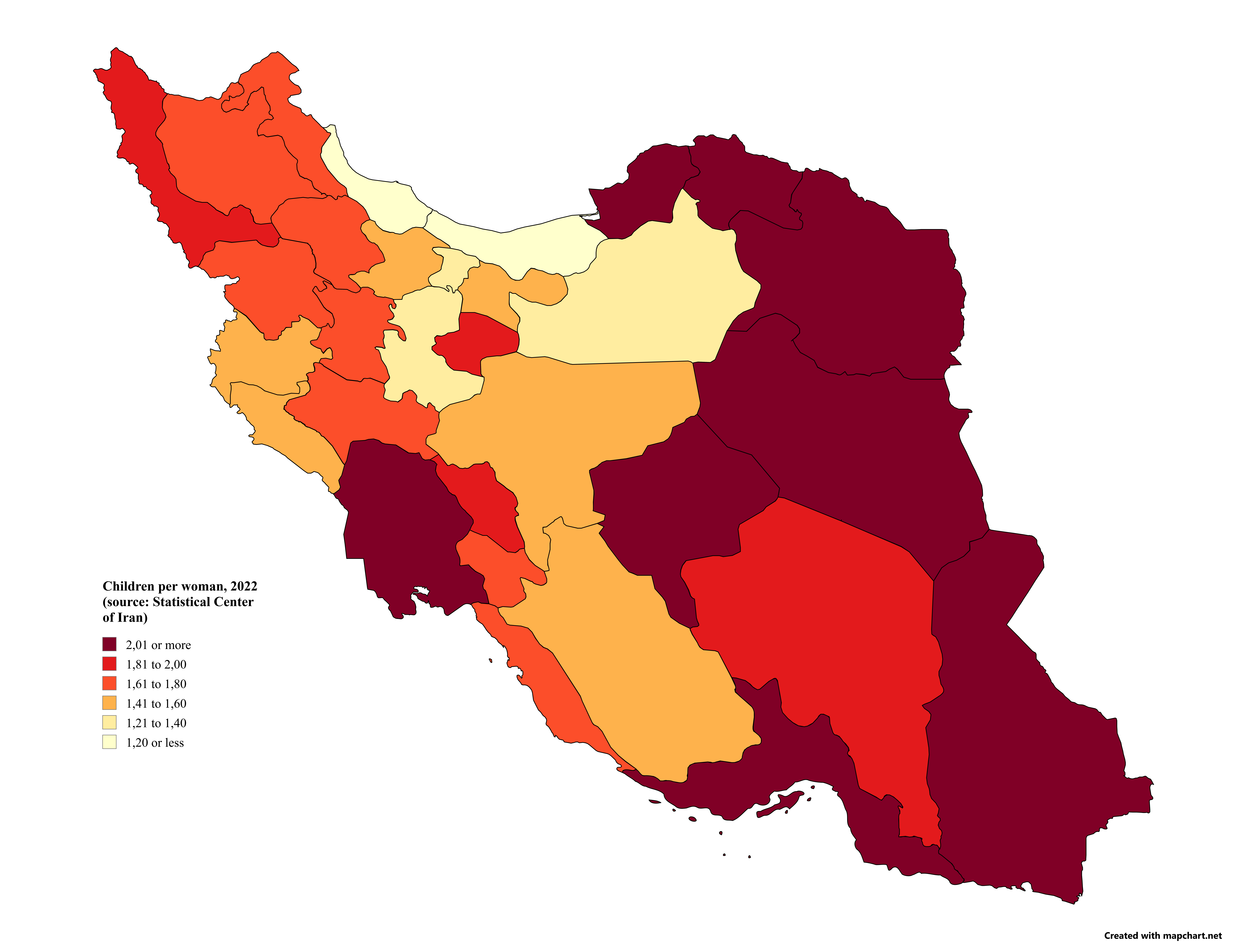Children per Woman in Iran by Province Map


Alex Cartwright
Senior Cartographer & GIS Specialist
Alex Cartwright is a renowned cartographer and geographic information systems specialist with over 15 years of experience in spatial analysis and data...
Geographic Analysis
What This Map Shows
This visualization provides a detailed look at the number of children per woman in Iran, broken down by province. This demographic metric is crucial as it reflects not only cultural norms but also economic conditions, educational access, and health services within the regions of Iran. The map allows us to see stark variations across the provinces, highlighting areas where birth rates are notably higher or lower than the national average.
Deep Dive into Fertility Rates in Iran
Fertility rates are a key indicator of a country's demographic health and social structure. In Iran, the average number of children per woman has decreased significantly over the past few decades, influenced by various social, economic, and political factors. Currently, the national average hovers around 1.7 children per woman, which is below the replacement level of 2.1. This decline can be attributed to increased access to education, particularly for women, and a shift in societal values regarding family size.
Interestingly, regional variations are pronounced in Iran. Provinces such as Khuzestan and Lorestan exhibit higher fertility rates, often exceeding 2.5 children per woman. This trend can be linked to cultural norms that favor larger families, as well as economic factors where children are seen as a source of labor and support for elderly parents.
In contrast, provinces like Tehran and Alborz showcase much lower rates, sometimes dropping below 1.5 children per woman. The urban environment, coupled with higher living costs, a focus on career advancement, and access to family planning resources, plays a significant role in these lower fertility figures. Additionally, urban areas generally provide better access to education and healthcare, which often correlate with decisions to delay childbirth or have fewer children.
Regional Analysis
When examining the map, one can note distinct patterns in fertility rates across different provinces. For instance, in the northern provinces like Mazandaran and Gilan, the average number of children per woman is relatively low. This trend may be influenced by higher educational attainment and employment opportunities for women in these regions.
Conversely, in the southeastern provinces like Sistan and Baluchestan, fertility rates remain high, often above the national average. Factors contributing to this include limited access to education and healthcare, as well as traditional views on family size. The disparities between these regions reflect broader socio-economic issues that Iran faces, including rural versus urban divides and varying levels of government investment in public health and education.
Additionally, the central provinces such as Isfahan and Yazd present a mixed picture. While some areas show declining fertility rates due to urbanization, others maintain higher rates due to cultural practices and economic conditions. This complexity highlights the need for targeted policies that address the unique challenges and opportunities within each province.
Significance and Impact
Understanding fertility rates is essential for planning and policy development. High fertility rates can strain resources, affecting healthcare, education, and employment opportunities. Conversely, low fertility rates may lead to an aging population, which can present its own set of challenges, such as workforce shortages and increased demand for elder care.
As Iran continues to navigate these demographic shifts, the implications for social policy and economic development are significant. Addressing regional disparities in fertility rates can help promote balanced growth and improve overall quality of life. Interestingly, the Iranian government has recognized these trends and implemented various family planning initiatives aimed at managing population growth and supporting women's health.
Looking ahead, the future of Iran's fertility landscape will likely be shaped by ongoing social changes, economic factors, and the effectiveness of government policies. As urbanization continues and educational opportunities expand, we may see further declines in fertility rates, particularly in urban centers. However, understanding and addressing the needs of provinces with higher fertility rates will be crucial for ensuring sustainable development across the entire country.
Visualization Details
- Published
- October 30, 2025
- Views
- 6
Comments
Loading comments...